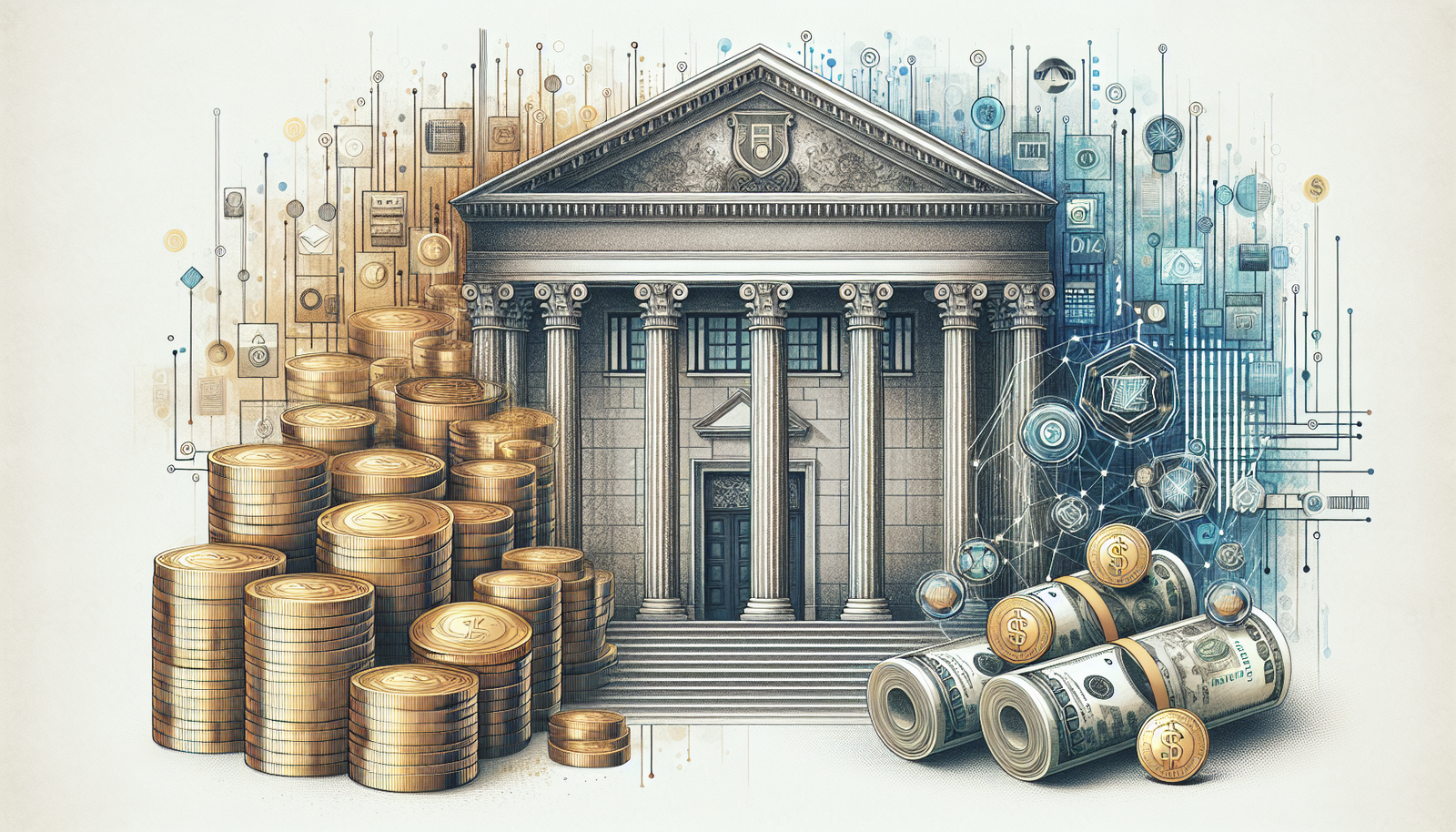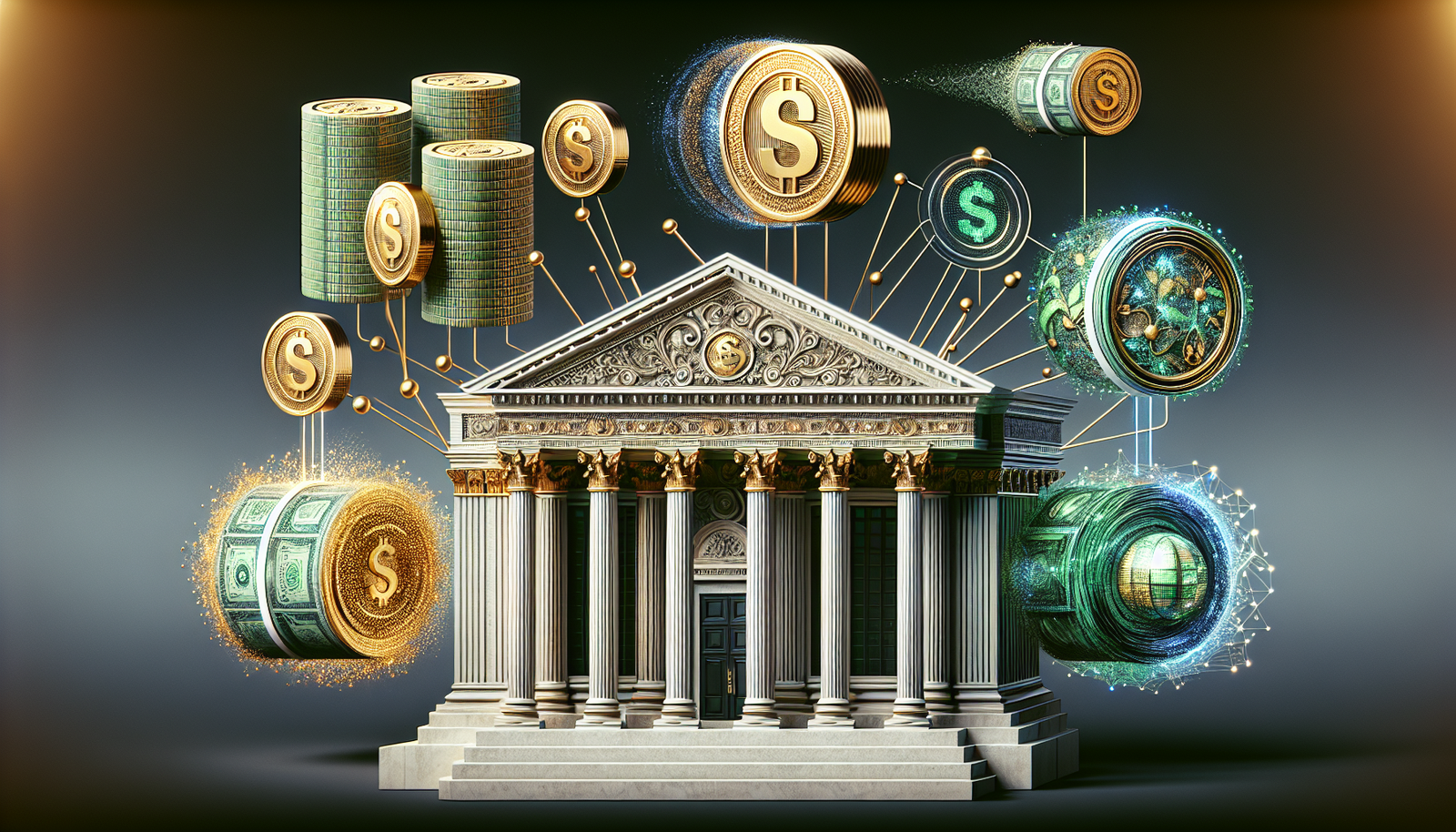
Picture yourself standing on the precipice of a grand and intricate maze where corridors of rules and economic theories intertwine, leading you not just to a simple treasure chest, but to the very heart of modern civilization’s most powerful tool: money. Despite its central role in our lives, the process of its creation in the banking system is shrouded in mystique. “How is Money Created in the Banking System” is an article that takes your hand and guides you through the complexities of our financial systems, shedding light on the baffling yet beautiful strategy that our banks employ to conjure up money, the lifeblood of our economy.

Understanding The Nature Of Money
Before delving deep into the complex world of banking and money creation, it is paramount to discern what money fundamentally is.
What is money?
Simply put, money is anything commonly accepted by a group of people in exchange for goods and services. From colorful bills, shiny coins to mobile transactions, it holds intrinsic value and serves as a medium of exchange.
Different forms of money
Throughout human history, money has taken various physical forms – from coins in ancient civilizations to paper currencies in modern times. But in today’s digitized world, money often exists as digital records stored on computers. Think of your online bank balance or cryptocurrencies like Bitcoin.
Characteristics of money
Money possesses distinctive characteristics that set it apart from other assets. It must be durable, portable, divisible, uniform, limited in supply, and universally acceptable.
Role of money in an economy
Money underpins economic activities in an economy. It is a medium of exchange that eliminates the inefficiencies of the barter system. It’s a store of value, enabling people to save and invest. It provides a frame of reference, quantifying the value of goods and services.
Exploring The Role Of Bank
Banks are the backbone of any economic structure and facilitate the flow of money in an economy.
Definition of a bank
A bank is a financial institution that accepts deposits from the public and extends credit to those who need it.
Functions of a bank
Banks serve multiple functions. They act as intermediaries between savers and borrowers, secure funds for those requiring credit, and provide a safe place to store money. Additionally, they provide numerous financial services, including insurance and investment options.
Different types of banks
There are various types of banks, each serving a specific purpose. These range from commercial banks, savings banks, cooperative banks, central banks to investment banks and virtual banks.
Role of banks in the financial system
Banks lubricate the financial system of an economy. They channelize funds from those with surplus money (savers) to those who need funds (borrowers). This stimulates economic growth by enabling businesses to grow, risks to be managed, and people to achieve their financial goals.
Money Creation By Central Banks
Central banks steer the economy’s monetary policy and consequently, control the money supply.
Role of Central Banks
The central bank administers monetary policy, controls the money supply, and ensures financial stability. It also acts as the government’s banker and lender of last resort.
Definition of Fiat Money
Fiat money is currency issued by the government and regulated by a central bank. Its value is not backed by physical commodities like gold or silver but by the stability and creditworthiness of the issuing government.
How Central Banks control money supply
Central banks control the money supply in several ways. Primarily, they change the interest rate at which commercial banks can borrow from them, affecting the cost of credit. They can also alter reserve requirements or engage in open market operations.
Impact of Central Bank’s policies on money supply
The central bank’s policies have extensive implications on the money supply. Manipulating interest rates influences borrowing and saving habits. Altering reserve requirements affect banks’ lending capacity, and open market actions impact the amount of money in circulation.

Money Creation Through Fractional Reserve Banking
Fractional reserve banking system is a critical furnace where most of the money production happens.
Definition of Fractional Reserve Banking
Fractional reserve banking is a system where commercial banks maintain only a tiny fraction of their deposits as reserves and lend out the rest.
How Fractional Reserve Banking works
Fractional reserve banking multiplies the money supply. Banks take deposits, keep a portion as reserves, and lend the rest. These loans become deposits at other banks and follow the similar cycle, creating a money multiplier effect.
Implications of Fractional Reserve Banking
Fractional reserve banking expands money supply and can stimulate economic growth. However, it might lead to credit expansions further escalating risks of bank runs and financial crises.
Critiques of Fractional Reserve Banking
The system faced criticisms for perceived unethicality of creating money out of thin air and potential instability due to bank runs. Some argue for alternatives like full reserve banking where banks hold 100% reserves against deposits.
How Commercial Banks Create Money
Commercial banks play a key role in expanding the money supply.
Commercial banks and the money supply
Commercial banks, through the mechanism of loans and deposits, significantly expand the money supply in a fractional reserve banking system.
Creating money through lending
When commercial banks extend a loan, they create new deposits in the borrower’s account, hence, creating new money.
Multiplier effect in banking
The multiplier effect indicates that the money supply can increase many-fold due to the repeated cycle of deposits and loans.
Role of interbank lending in money creation
Interbank lending is where banks lend to each other. It helps to redistribute funds amongst banks and is a critical part of the money creation process.
Constraints On Money Creation
There are several constraints that restrict money creation.
Regulatory constraints
Banks are obliged to meet regulatory requirements like maintaining a certain reserve ratio. This limits their ability to create money.
Economic constraints
Demand for loans is a significant constraint. Without demand for loans, banks can’t create loans, hence limiting money creation.
External constraints like international obligations and gold standards
External constraints, such as international obligations and adherence to a gold standard, can also limit a country’s money creation.
Impact of public confidence on money creation
The banking system relies significantly on the public’s confidence. A lack of trust could lead to bank runs, reducing banks’ ability to create money.
Money Destruction In The Banking System
As baffling as it sounds, banks don’t just create money; they also destroy it.
Definition of Money Destruction
Money destruction or money deletion occurs when existing money is removed from an economy.
How banks destroy money
When people repay loans, the money they used to repay doesn’t get recycled – banks essentially “delete” this money from the system.
When is money destruction needed?
Just as the printing of money can inflate an economy, the painful process of money destruction may sometimes be necessary to reduce inflation or financial instability.
Implications of money destruction
Money destruction can stabilize an overheated economy. But, it can also result in less lending, lower spending, and potentially economic downturn in extreme cases.
The Role Of Technology In Money Creation
Technology has revolutionized the way we conceive and create money.
Digital Money
Digital money exists only in digital form and can be used for online transactions. It has expanded the possibilities for money creation.
Internet banking and money creation
Internet banking has enabled instant transfers, removing physical barriers, thus heightening efficiency in money creation.
Cryptocurrencies and money creation
Cryptocurrencies like Bitcoin have redefined money creation. They exist outside the traditional banking system and are created through a technological process called mining.
Future trends in banking technology
Future innovations could further reshape money creation – think of Artificial Intelligence in banking or the possibilities with Central Bank Digital Currencies (CBDCs).
Economic Effects of Money Creation
Money creation exerts profound effects on the economic landscape.
Money creation and inflation
Excessive money creation can lead to inflation, where the general level of prices rise.
Monetary policy and economic growth
Monetary policy, by controlling money creation, can stimulate or dampen economic growth.
Money creation and financial crises
Excessive money creation can fuel financial crises as it might lead to high-risk lending and asset bubbles.
Impact of money creation on inequality and poverty
Money creation can widen wealth gaps if the newly created money disproportionately benefits certain groups more than others.
Banking Reforms And Money Creation
Effective reforms can overhaul banking operations and restrict unwarranted money creation.
Need for banking reforms
Banking reforms are crucial to ensure financial stability, prevent crises, and maintain public faith in the financial system.
Reforms to regulate money creation
Several reforms aim to regulate money creation such as implementing stricter reserve requirements, introducing more stringent lending criteria, or even shifting to alternative banking models.
Impact of banking reforms on the economy
Banking reforms can help to stabilize the economy, protect consumers, ensure financial inclusion, and create a more sustainable financial system.
Effectiveness of banking reforms in controlling money supply
Implemented wisely, banking reforms can effectively control the money supply. However, it requires careful calibration and stringent oversight to ensure that the reforms serve their intended purpose.
In essence, the labyrinthine world of money creation is far more intricate than it appears on the surface. It’s a dynamic process that intertwines numerous economic entities. It bears significant impacts on our financial system and inevitably, our everyday lives.

Leave a Reply